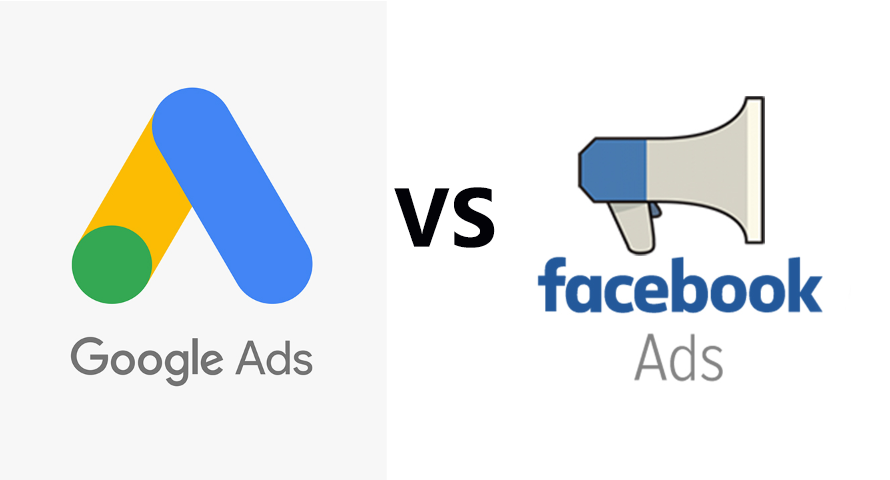Best Facebook Ad Campaign Structure For Ecommerce
In reality, the first step toward creating Facebook advertisements that will convert highly is to plan toward having an effective campaign structure. Why? Because an ideal Facebook ad campaign structure will allow businesses to develop their techniques and optimize the respective campaigns at each stage to guarantee the best Return on investment (ROI). As such, consider it your Facebook marketing cornerstone, one that will assist you in scaling your promotional strategies for the finest outcomes.
An effective Facebook campaign structure will have numerous campaigns that serve various purposes. It must have different ad sets, unique targeting, and bid techniques. Additionally, each ad set must provide a selection of ad formats. This framework guarantees you can effectively promote throughout the complete marketing or sales funnel.
Need assistance using promoted social media ads to boost your brand and customer base? Are you new to Facebook marketing or having trouble setting up the right ad creatives? You’re in the right spot. In this beginner guide, we will cover Facebook ad campaign structure, best practices, and mistakes to avoid in your next video ads creatives.
What are the tiers in the Facebook ad structure?
Facebook organizes its ad structures in three tiers; campaign, ad set, and ad. Developers can connect to a fourth level within the API called creative. But why would you need to run multiple campaigns? Because it’s essential to utilize a distinct target for each ad creative to address the varied e-commerce sales funnel objectives that are in place. By doing this, you can be certain that Facebook will make every effort to assist you in achieving the campaign’s key goals and increasing the success rates.
Additionally, it will assist you in better campaign optimization for the greatest returns over time.
What are the three layers to a FB ads Manager campaign setup?
- Budget/Bid
- Creative
- Targeting
How to set up a Facebook ad campaign structure for eCommerce
Let’s delve into the ultimate Facebook ad campaign structure drafting. Here, we’ll outline all the procedures necessary to produce a successful campaign at these tiers before offering additional Facebook ad campaign structure -suggestions for e-commerce.
Step 1: Set up a new Facebook Business Manager Account
We advise you to create a Facebook Business Manager Account to properly build your Facebook advertising campaigns. It’s a free application that helps you monitor and manage various Facebook pages, business assets, and ad accounts even though it’s not required to create ads.
Follow the following steps to set up a Facebook Business Manager account effectively:
- Login to Facebook Business Manager
- Click and navigate to “Create Account.”
- Enter your desired business name, select the business account’s primary or official Facebook page, and provide your full name and original email address.
Next, set up unique access to the ad accounts you just created:
- Click on Business Manager Settings
- Under Accounts, navigate to “Ad Accounts.”
- Click the button “Add” via the drop-down menu and appropriately choose “Create a New Ads Account.”
Step 2: Create a new campaign objective for the Facebook ads
At this stage, select an objective for the Facebook ad set. Log in to the Facebook Ad Manager and choose your existing Ad Account. Navigate and click the “Create Ad” button.
The various objectives to choose from will be displayed, as seen above. These three stages highlight the buyer’s journey, i.e., Awareness, Consideration, and Conversion.
Then which objective must you pick? Read on to discover!
Select “Awareness” if you aim to:
- Create massive interest around the product or service you offer
- Increase your brand reach
- Gain immense “likes” or “followers” for the Facebook Page.
Select or tick “Consideration” if you aim to:
- Get more leads
- Boost engagement
- Increase total leads
- Increase user traffic from your paid Facebook ad to any of your store’s la don’t page or product pages, e.t.c.
Select “Conversion” if you aim to:
- Publicize your product listing.
- Increase website conversions.
- Bring more attention or awareness to your online store.
After choosing the campaign objective, you will have to give your campaign a name.
Step 3: Segment your audience
The next step is to determine your audience. Anyone you would like to reach using your adverts should be clear at this stage. Your adverts are more likely to generate the desired amount of income when seen by consumers who will be ready to buy your services or products. While humans might not be efficient at ingeniously segmenting audiences, ConvertedIn comes to your rescue. The tool assists you in running rewarding Facebook Ad campaigns, thanks to its cutting-edge “artificial intelligence” insights capabilities.
For custom audiences, they can be targeted based on:
Interest: (hobbies, liked pages, preferred activities, e.t.c.)
Behavior: (preferred devices, past purchases, e.t.c.)
Connection: (for limiting people that have previously seen your ads or are aware of your brand)
Demographics: (education, gender, age, etc.)
Location: (target by state, city, country, e.t.c.)
Note: Retailers can use custom audiences to re-engage existing customers or users who have shown genuine interest in your services and products.
Step 4: Choose your budget
What are your financial limits for each advertisement? Remember, your budget is a cap on the amount you wish to spend, and it is established only at the campaign level.
At this stage, select either a Daily or Lifetime budget. If you choose:
Daily: set the maximum amount you want to spend on every ad type daily.
Lifetime: set the maximum amount you want to spend on your ad set level during the lifetime of all campaigns.
Facebook recommends a $20 daily advertising budget, but you should change it based on your campaign’s objectives. But guess what? It takes time to update your budget manually. Fortunately, marketing budget optimization can easily be taken care of by ConvertedIn AI application. The tool tracks how your marketing $ effectively performs across different ad packages.
Step 5: Deploy your Facebook Ads
Here, you get to choose what your clients’ or audience’s eyes will view and engage. When building a campaign, you can select an ad format, title, CTA, images, and placement on Facebook after set up. Before you finally launch your ads, it’s vital to know that;
There are two different ways to make adverts;
- Boost a preexisting post
- Create a new advert
Let’s discuss each one in turn:
Create a new advert
Choose your preferred format before you start creating a new advertisement. The most widely used ad formats are:
- Single video
- Collection Ads, Canvas
- Carousel
- Instant Experience
- Single Image
Boosting existing post
Have you once shared an organic post via your Facebook page? To increase its reach, you can promote it. Navigate to the Facebook Ads Manager interface or dashboard and choose “Use Existing Post” to accomplish this. Marketers must select the post they would like to utilize for advertisement after choosing the Page where the retailer initially posted it.
Note: Consider that the format choices must rely on the objectives you initially chose for the specific advert.
Now that you’ve selected a format, It’s time to design the ad. Adding the video, copy, graphics, etc., is necessary since the fundamental objective is to get your viewer’s attention. However, be sure that it also speaks to their interests.
Step 6: Select where to Fit the Ad
There are two methods for selecting ad placements:
Manual placements: retailers determine where Facebook will display the ads.
Automatic placements: Fb automatically places your advertising in places where they are more likely to work well.
Step 7: Publish the Ad
Click the “green” publish button after creating the advertisement. Facebook will check the campaign ad set to see if it meets the advertising policies. If everything goes right, Fb will send a confirmation mail to you.
Step 8: Test run the Campaign ad set
Test many iterations of your advertisements to get as much out of your ad spend. The effectiveness of your ad campaigns will increase -if you try several variants of the ad types or copy or graphics, see what performs better and what doesn’t, and then make the required adjustments as you go.
Examples of Facebook Ad Campaign Structure for E-commerce
Example 1:
Let’s assume we are targeting potential leads in a retargeting list and previous lookalike campaign. The objective is to run three domain adverts for each. In this instance, a domain ad links to the homepage (online product page), another link to a specific high-end product, and the last link to the promotion landing page.
To create more ad sets for the campaign, you would replicate each one of the ads you made during the first ad set. Your messaging (title and CTA text) will, therefore, likely need to be adjusted for that targeted group.
Example 2:
For this Facebook ad campaign structure example, Walmart Ltd is assumed to be a small retailer but sells different products. In this instance, the retailer decided to further segment users/customers for the campaign.
The goal is to target various lookalike audiences to increase awareness of the products in the online store. Splitting the retargeting campaigns into two parts will enable you to target specific prospects to your pages meant for online cart abandon remarketing.
What are the best practices for Facebook Ad Campaign Structure in E-commerce?
- A/B test or Split test your Facebook Ads
- Use jaw-dropping (captivating) images
- Employ unique Call-to-action
- Avoid irrelevant intro’s in your video ad
- Create benefit-driven campaign headlines
- Ensure your Ad copy is short and simple
- Follow the steps in this write-up
What are the mistakes to avoid in Facebook Ad Campaign Structure?
- Do not clone the Ads of your competitors. If you will do such, craft a new copy in a new way
- End a Campaign that’s not converting after two attempts
- Adhere to Facebook ad policies
- Since most advertisers pay through card payment, ensure that your linked card is not going to decline because of insufficient funds; to prevent the takedown of a performing ad;
- Do not use irrelevant Facebook pixels. Ensure that you use appropriate pixels in the right manner.
- Avoid Marketing a series of products that don’t complement each other. The goal is to make prospects buy one of the products with different variants.
What Next?
If you want to increase ROI on your Facebook ad campaigns, concentrate on getting the overall Facebook ad campaign structure perfect for your eCommerce store. The right results will fall into place after you utilize the proper system.

